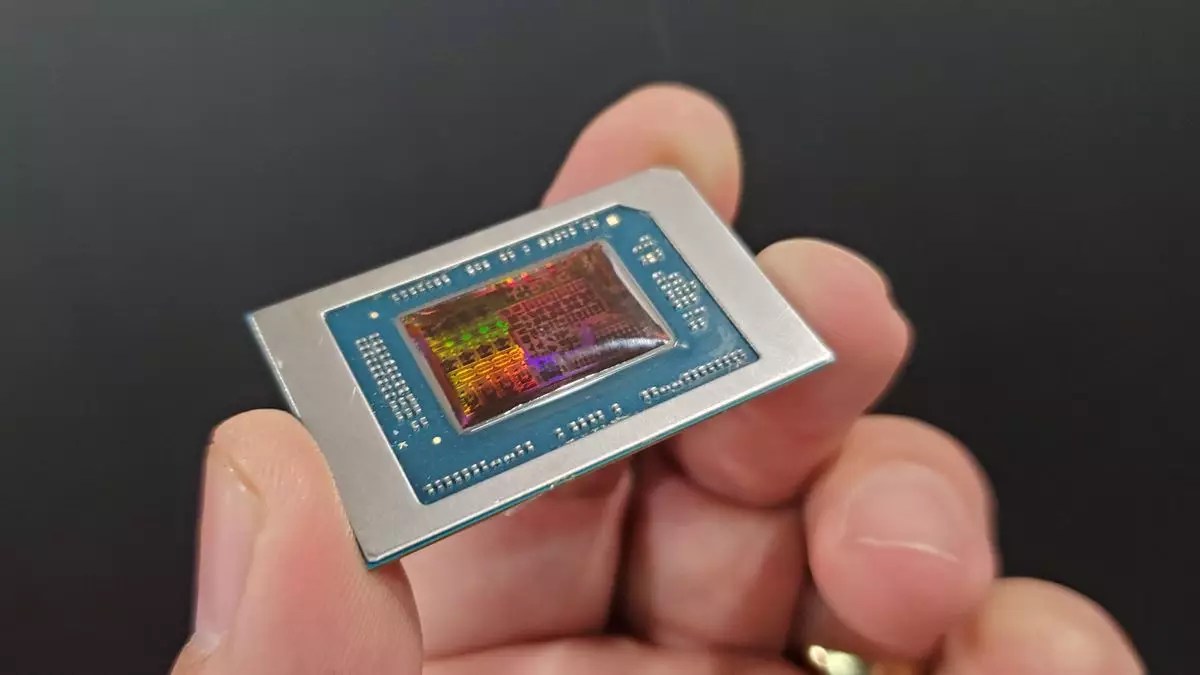AMD’s Strix Point APU stands out as a game-changer in the realm of compact computing solutions, particularly for laptops and handheld devices like the Razer Blade 16 and the OneXPlayer OneXFly F1 Pro. This chip represents more than just an upgrade; it embodies a shift toward performance-driven portability, emphasizing that you can have robust computing power in a lightweight form factor. While Strix Point has made its mark in mobile applications, there’s a palpable excitement surrounding its anticipated desktop version, slated for release in late 2025, that promises to bring this technology to a broader audience.
The possibility of the desktop Strix Point, rumored to be branded as the “Ryzen 9000G,” stirs curiosity among tech enthusiasts. The addition of “AI” in its title suggests that AMD is not just sticking to traditional paradigms but is moving into territories steeped in artificial intelligence capabilities. This ambition is indicative of an industry trend where cutting-edge technology is increasingly intertwined with everyday computing needs, harnessing AI to enhance performance and user experience across applications.
Architectural Commodities: Zen 5 and RDNA 3.5 Integration
At the heart of the Strix Point APU lies an impressive architecture that combines the best of both Zen 5 CPU cores and RDNA 3.5 graphic units. With up to 12 CPU cores—featuring a mix of four standard Zen 5 cores and eight compact Zen 5c cores—its design is a testament to AMD’s prowess in maximizing performance efficiency. Notably, this feature is particularly essential when tackling demanding applications while still prioritizing battery life in portable devices.
The inclusion of 16 RDNA 3.5 graphics compute units not only boosts visual performance but also supports advanced gaming and graphic capabilities. Coupled with a neural processing unit (NPU) rated at an impressive 55 TOPS, Strix Point is well-equipped to handle a multitude of tasks efficiently, from gaming to creative design processes. Users should anticipate an experience that melds technical advancement with real-world usability—ideal for content creators and gamers alike.
Furthermore, the chip is designed to integrate seamlessly with the AM5 socket, providing versatility across a range of AMD motherboards. This compatibility is crucial as it alleviates potential upgrade barriers for existing AMD users, empowering them to harness the power of Strix Point without needing to overhaul their entire system.
The Future of Compact Desktops and Mini PCs
While the theoretical applications of Strix Point in desktop environments appear promising, it’s essential to understand its positioning in the market. It is expected that the desktop version will exhibit slightly higher clock speeds compared to its mobile counterparts, effectively utilizing improved thermal management systems and power delivery in desktop settings. However, it must be stated that for users seeking maximum performance, particularly in gaming, a separate CPU-GPU combination will likely yield superior results.
That said, the essence of Strix Point shines through when discussing mini PC applications. It offers a unique opportunity for builders and tech lovers to assemble compact systems that do not sacrifice performance for size. Devices like the Ayaneo Retro Mini PC AM01S are excellent examples of how Strix Point can be leveraged, demonstrating the chip’s ability to deliver a robust computing experience in an inconspicuous form factor. This allows for innovative uses of technology, catering to a community that values versatility over traditional performance benchmarks.
AMD’s Strix Point APU has already established itself as a solid choice in portable computing, and the forthcoming desktop variant appears poised to enhance its reputation further. With affordability in mind, the desktop version—is expected to come at a more attractive price than conventional mobile chips—could motivate a new generation of compact PC enthusiasts to embrace AMD’s technology. All eyes are on the anticipated launch as AMD continues to push the envelope in performance and efficiency, making compact, powerful computing more accessible than ever before.


Leave a Reply